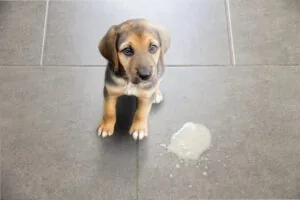Cat Declawing: Pros, Cons, and Safer Alternatives
Cats by nature have a need to scratch to mark their territory, stretch their bodies, and remove the worn-out outer claws to expose fresher sharper claws underneath. For an indoor cat, this natural instinct can result in tattered curtains, torn up sofas, and carpets left in shreds—destructive and cranky behaviors that can leave frustrated pet parents scrambling for a solution. Some may be tempted to declaw their cats. Also known as onychectomy, declawing is a surgical process in which the front knuckles of the cat’s toes are amputated so the animal can no longer use its claws to scratch household items or hurt others during rough play—or defend itself should it meet an aggressive cat or another animal outdoors or even hop a fence or climb to get away from a predator.
Many groups, including the ASPCA and American Veterinary Medical Association (AVMA), discourage declawing and suggest non-surgical alternatives. This major surgery has the potential to result in chronic, lifelong pain, and a change in the animal’s gait. In 2019, New York State became the first state to outlaw the procedure. Declawing is illegal in many countries in Europe, as well as in the United Kingdom, Brazil, Australia, New Zealand, and Israel.
Read on to learn about special circumstances that may require declawing and a guide to safer alternatives to declawing so you and your kitty can have a happier relationship.
What is Cat Declawing?
Declawing is a surgical procedure that permanently removes a cat’s claws. It’s one method used by cat owners to prevent a cat from damaging household items like furniture, carpets, and curtains when the cat scratches, which is normal feline behavior. Once seen as a routine practice, declawing cats has become a hot-button topic in recent decades, as more people have come to view the procedure as inhumane and even barbaric. Declawing doesn’t just remove a cat’s claws. It partially amputates their toes, removing the last bones and ensuring that the claws can’t grow back. The cat declawing surgery is officially known as an onychectomy.
Declawing is a partial digital amputation—the distal phalanx (last bone) of each toe is removed with a surgical blade (scalpel), surgical laser or sterilized guillotine-style nail clipper.
Because the claws are attached to the distal phalanges (plural for phalanx), removing these bones means the claws will not grow back. However, in some instances, the surgeon may fail to remove the entire distal phalanx, in which case the claw might experience regrowth.
A declaw surgery is performed while the cat is under anesthesia. The veterinarian surgically removes the last toe bone of each toe, then closes up each toe with sutures (usually dissolvable stitches) or surgical glue, and then bandages the paws. Typically, only the claws on the front paws are removed because cats mostly use their front paws for scratching.
An alternative surgery to a declaw surgery is a tendonectomy, in which the tendons under the toes are cut to prevent the cat from extending its claws.
Pros of Declawing Cats
Declawing cats is sometimes medically indicated, for instance, if the cat has a tumor on the toe or has injured its paw so severely that amputating the ends of the toes is medically necessary.
Additionally, some people claim that declawing cats may save the lives of cats that would otherwise be euthanized in shelters because their owners don’t want to live with their destructiveness. In some instances, declawing might allow an owner to keep a cat that scratches them (intentionally or unintentionally), especially for people who are ill or immuno-compromised.
Cons of Declawing Cats
There are many downsides to declawing cats.
Those opposed to elective declawing of cats cite numerous objections to declawing cats, including the following:
- Declawing surgery is painful for the cat
- Potential for infection after surgery
- Surgical amputation is an unnecessary mutilation
- Declawing takes away a natural behavior for cats
- Declawed cats cannot defend themselves from other animals
- Some cats may have long-lasting pain or phantom pain
- Lameness (limping or problems walking, running or climbing)
- Some people claim declawed cats develop other unwanted behavior issues like aggression and inappropriate elimination (urinating outside the litter box)
Alternatives To Declawing Cats
If your cat is exhibiting destructive scratching behavior, you try one of the many more humane alternatives to declawing:
- Provide lots of acceptable scratching surfaces so your cat scratches them instead of your furniture. Offer your cat many different objects she is allowed to scratch, including cat trees and scratching posts. Make sure to provide both horizontal and vertical scratching surfaces, and offer different types of material (carpet, sisal, cardboard, etc.).
- Place scratching aversions on unacceptable scratching items. If your cat is scratching a couch, chair, or other piece of furniture, try using a scratching aversion. One option is to cover the furniture with a protective layer of fabric (like a fitted sheet). If this isn’t enough to deter your cat, use something your cat won’t like the feel of. Cats who aren’t deterred by fabric coverings may be less inclined to scratch surfaces covered in plastic. Try using a plastic curtain to wrap the object in question. Placing aluminum foil on the surface is another option, as is double-sided tape. Covering a surface with double-sided tape can be tedious unless you use a product designed specifically for that purpose. KatSupreme Anti-Cat Scratch Furniture Protector is an example worth considering. It consists of large sheets of double-sided tape you can quickly affix to a variety of surfaces including polyester, cotton, and velvet. Your cat won’t like the sticky feel under their paws, so they’ll find something else to scratch – hopefully a scratching post! For cats that scratch carpeting or other types of flooring, place a plastic office chair mat over the area with the spiky side facing up. Place an acceptable scratching surface next to each item you cover. For instance, you might place a scratching post near the couch arm or a horizontal scratching board near the covered carpet. You can also sprinkle catnip near the acceptable scratching items to entice your cat to use them. In time, your cat will learn to leave the forbidden item alone and you can uncover it.
- Keep your cat’s nails trimmed short. Weekly nail trimming will keep the nails blunt so they do less damage if your cat does scratch something unacceptable.
- Try nail caps. Rounded vinyl nail caps like Soft Paws slip over each nail to allow the cat to scratch without causing any damage. The nail caps are secured with pet-safe adhesive glue and stay on the nail for four to six weeks, at which time they must be replaced.
Whichever option you choose, just remember that declawing your cat can cause your feline friend quite a lot of pain and suffering. If this procedure isn’t necessary due to medical issues, consider trying one of the other, less painful alternatives listed above.
Share This Post
Recent Posts
About Shallowford Animal Hospital
Shallowford Animal Hospital and The Pet Spa at Shallowford are dedicated to the exceptional, compassionate care your pet deserves. Pets hold a very special place in our families, and we treat yours like our own.



